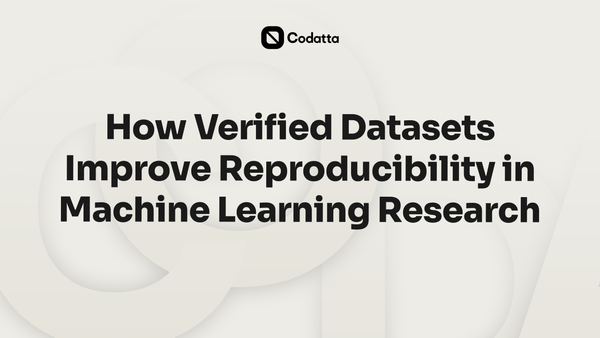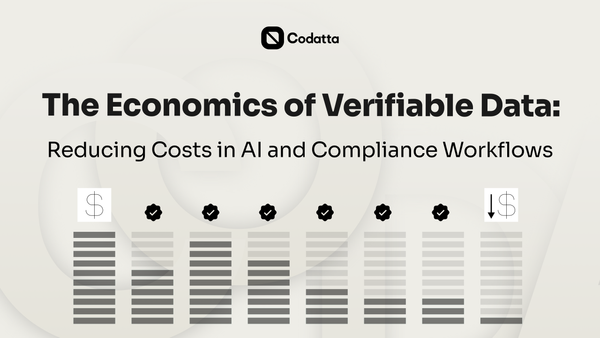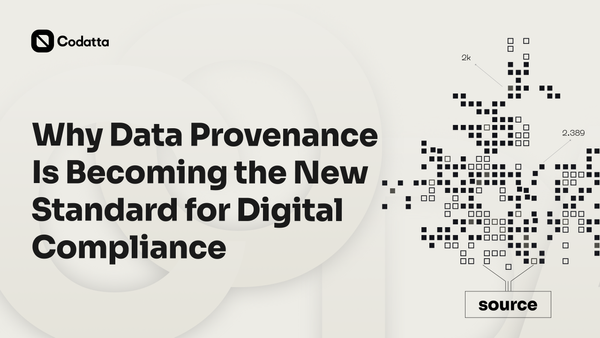Structured vs. Unstructured Data: Why It Matters for AI and Blockchain

Every AI system, machine learning model, and blockchain application depends on data, but the format it arrives in changes everything. Structured data follows a predefined schema, stored in fixed tables that make it easy for analytics, algorithms, and automation. Unstructured data is the opposite: free-form text, images, audio, video, logs, and other inputs that lack consistent formatting.
In data science and artificial intelligence, structured and unstructured data each bring unique strengths. Structured inputs deliver clarity and scalability for real-time analysis, while unstructured sources capture the richness of human language, media, and behavior — ideal for natural language processing and advanced pattern recognition. Yet most big data today is unstructured, and without proper structuring or semi-structured data handling, valuable signals remain out of reach.
Read on to see why bridging these formats is essential for accurate models, smarter automation, and trusted blockchain-based intelligence, and how Codatta is building the tools to make it possible.
The Challenge of Unstructured Data for AI
Unstructured data is growing fast and outpacing every other data type. By 2025, about 80 % of all stored data will be unstructured — logs, social media posts, sensor data, images — flooding into data lakes and cloud systems every minute.
This surge in complex, unstructured information makes storage, processing, and analysis harder. Data integrity suffers when the format isn't clean. AI models, analytics engines, and machine learning algorithms need well-organized, labeled inputs to live up to their promise. When data is not cleaned, normalized, or tagged properly, even the most powerful AI fails. In fact, close to half of enterprise AI projects stall or fail because of poor data readiness. Adding to that, 85 % of AI projects break down due to bad data quality, not flawed algorithms.
In a combined AI + blockchain ecosystem like Codatta, these issues are magnified. Unstructured blockchain records and metadata must be made traceable and structured for contribution tracking, royalty attribution, and automation. Without clear data structures and quality control, it's impossible to ensure trusted analytics, secure on-chain governance, or reliable AI agent behavior.
Why Structured Data Enables Smarter AI and Blockchain
Organizing data into well‑defined tables, tags, or registries brings clarity, consistency, and control, and that’s what makes structured data highly valuable for AI models, analytics, and blockchain systems. When data follows a predefined format, machine learning algorithms can detect patterns faster, metadata becomes trustworthy, and smart contracts execute more predictably.
Think of structured data as the organized backbone behind smart contracts and metadata registries. It supports consistent data integrity, simplifies data processing, and lowers engineering complexity. Systems don’t waste time translating chaotic inputs like social media posts, logs, or mixed-format blockchain records — they can directly read and verify what's needed.
In 2025, the argument for structured data is stronger than ever. AI-powered document management tools like RAG systems rely heavily on having accessible, structured internal documents to deliver accurate and timely results. Similarly, today’s enterprises are building unified, governed data foundations rather than relying on fragmented sources. This shift powers smarter decisions while meeting compliance needs.
In blockchain networks, structured registries help track contributions, attributes, and usage, key for transparent reward systems like those in Codatta. When contributors label metadata in a structured format, that information becomes instantly queryable and verifiable, critical for automation, rights attribution, and real-time analytics.
The Middle Ground: Semi-Structured Data
Between the clear order of structured data and the variability of unstructured data is semi-structured data. It has an identifiable organization but no fixed schema — common examples include JSON, XML, and certain NoSQL formats. These allow tags or markers to define data entities while keeping flexibility for varied data sources and formats.
In data management and data analysis, semi-structured formats help bridge the differences between structured and unstructured types of data. They support efficient data translation by retaining enough structure for searchability while capturing more diverse content than rigid database tables.
For Codatta, semi-structured inputs can be a useful use case when contributors provide metadata with tags that meet quality and data storage requirements. Once received, the protocol normalizes these inputs into fully structured registries. This ensures consistent integration across datasets, simplifies processing, and maximizes the long-term value of contributor-curated knowledge.
Real-World Consequences of Inadequate Structuring
When structured data and unstructured data are not connected or properly managed, AI integration suffers. Poorly labeled or siloed information slows data analytics, weakens data models, and forces teams to spend more time cleaning inputs than building solutions. In 2025, surveys show that over 40% of AI projects fail to move past pilot stages because data format issues make the information unusable at scale.
For decentralized ecosystems working with blockchain and big data, the difference between structured data and unstructured data becomes critical. Without consistent formats and quality control, data generated by contributors cannot be reliably traced, shared, or monetized. This directly impacts trust, reproducibility, and economic flow.
In systems like Codatta, contributors label and submit examples of structured data so that blockchain records can be processed, verified, and reused across multiple AI and analytics applications. Without this step, the value of contributor-curated knowledge decreases, and opportunities for automated compliance, attribution, and decision-making are lost.
Why This Matters for Codatta
Codatta’s protocol organizes blockchain metadata and external data into clean, labeled, and verifiable data sets. This structured data is highly valuable for AI technologies because it improves model accuracy, supports transparent royalty attribution, and enables traceable usage in real applications.
In the system, data is stored in formats designed for secure data sharing across contributors and integrated platforms. This structure allows large amounts of data to be processed efficiently while keeping quality measurable. By utilizing blockchain, Codatta records contributions and usage openly, ensuring authorship proof and consistent data integrity.
For many blockchain uses, such as compliance reporting, automated analytics, or fraud detection, structured information is essential for accuracy and reproducibility. Codatta’s approach makes raw inputs usable at scale without compromising trust or security.
Final Thoughts
Structured data improves AI performance, strengthens transparency, and supports smart, automated infrastructure. It allows faster data access, higher accuracy in AI models, and reliable attribution for contributions. In contrast, examples of unstructured data, such as raw blockchain logs, social media text, or mixed media, require extra processing before they can be trusted and reused.
Codatta serves as a bridge for blockchain for data, transforming data like transaction records, annotations, and demographic inputs into structured, attributed knowledge. This process ensures that the data requires less manual cleanup and is ready for AI integration, contributor rewards, and compliant sharing.
To see how structured data can drive the next wave of AI-powered blockchain innovation, explore or contribute at codatta.io.




